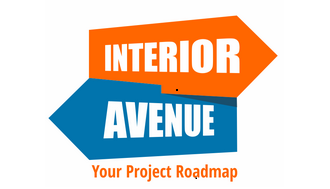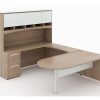Complete Guide To Buying Office Cubicles
Complete Guide To Buying Office Cubicles
When many people think of offices, an image of a cubicle comes to mind. Office cubicles allow each worker to have an individualized space during the workday. No matter how you arrange them, cubicles organize office space and help employees focus more on their projects.
Employers have many things to consider when purchasing office cubicles for their business. From the different sty of office cubicles to office cubicle prices, it can sometimes seem tricky to make the best choice. Luckily, when you keep the right considerations in mind, it’s much easier to know how to choose the best cubicles for your office.
Here is an office cubicle buyers’ guide with many tips for buying office cubicles.
Things To Consider When Buying Office Cubicles
Before you start browsing cubicle options, you might want to consider a few things about your office space first. The most important thing is to consider your office environment and how you can select a cubicle that will fit the atmosphere. Then, your cubicles can enhance your office space and create a more cohesive environment.
Here are more ideas on what to consider when buying office furniture and cubicles:
- Work environment: Work environments vary just like office cubicle styles. While some offices are hubs of social interaction, others function better as quiet workspaces. Consider the general atmosphere of your office and consider what cubicles will contribute to this feeling. For instance, if your office is lively and collaborative, you might purchase an open-style cubicle. If your workers prefer privacy, you can browse cubicles with higher walls or more enclosed features.
- Length of employee tenure: Another thing to think about is how long employees typically stay at your workplace. If you have high turnover rates, employees probably won’t take the time to decorate or personalize their cubicles. But employees who stay for many years likely will want more space to personalize their cubicles. Keep employee tenure length in mind when considering cubicle size.
- Nature of the work: You should also compare your office’s work style to the amount of desk space your employees need. For instance, workers who primarily respond to emails or answer phones need less room than employees who draw large blueprints.
With these considerations in mind, you’re sure to find yourself choosing the right cubicles for your office.
Types Of Office Cubicles
As you browse through various office cubicles, it’s important to remember each has its own advantages and disadvantages. If you’re wondering what to know when buying cubicles, understanding the differences between the different types will help you make the best decision.
There are three major types of office cubicles:
- Call center: Call center cubicles are the typical image of cubicles you see in media and other depictions. While these cubicles run smaller, each unit usually exists separately from one another. So, they allow for complete privacy between workers.
- Benching: Benching systems are different from a typical cubicle and have an open desk design. It’s basically an open-concept workstation usually shared by two or more employees. You can set up dividers to create desk spaces or leave it completely open for more collaboration.
- Team desking: Team desks are similar to benching spaces, in that they’re open-concept desk spaces often attached to each other. At team desks, each employee sits in an individual pod that’s connected to a row of other pods. Some team desking systems use tall dividers to give each employee more privacy. As the name suggests, these spaces typically encourage a lot of group work and collaboration.
Office Cubicle Heights And Sizes
Next on our office cubicle buying guide is cubicle sizes. Office cubicles are also available in many different dimensions. Employers typically choose cubicle size depending on their budget and desired levels of privacy for employees.
These are examples of average office cubicle sizes:
- 4′ x 2′ and 5′ x 2′ size: One of the shortest sizes available, these are typical in call center cubicles.
- 6′ x 6′ size: This size is often the standard cubicle size for most offices.
- 8′ x 8′ size: The 8-by-8 size is a more spacious cubicle option and is optimal for multiple desktops or extra room.
- 9′ x 12′ size: This size usually comes in a booth-style with maximum privacy, often even with closing doors.
And here are some office cubicle heights and panel dimensions:
- Low (41” wall height): This height is one of the lowest available, so there is maximum visibility between employees as they work. They might be able to see each other’s computer screens and talk easily.
- Medium (53” wall height): This option offers more privacy, but communication is still possible between cubicles.
- High (65” wall height): With this height, employees couldn’t see into each other’s spaces even when standing. This is an excellent choice for privacy and also helps with noise levels.
- Enclosed (82.5″ wall height): This tallest height is usually enclosed, accompanying the 9-by-12 cubicle dimensions. It allows workers complete privacy and isolation from noise while working.
Office Cubicle Materials
You can also choose from a variety of materials for your office cubicles. If you have a particular office aesthetic in mind, you could select the material that matches this best. Or, you might select a material that is the most cost-effective for your budget.
These are common materials used for cubicles:
- Fabric or padding: Using fabric in cubicles creates a cozy and comfortable feeling. It’s often available in a variety of colors, so you can customize it as you prefer. And the padding makes it easy to pin up pictures and other things for employee personalization.
- Metal or laminate: Metal or laminate materials are a cost-effective choice with easy installation. These materials are durable, creating long-lasting panels for your workspace. Plus, their surfaces are easy to clean.
- Acrylic or transparent material: Using acrylic or other transparent materials for cubicle walls creates an aesthetically pleasing area. However, the transparency doesn’t provide very much visual privacy between workers. If that’s important to you, it might not be the most optimal option.
For You
Las Vegas, NV

Panel Systems, Room Dividers And Partitions
Cubicles typically consist of panel systems. These are the walls that separate one cubicle from another and the panels on other sides. Office cubicle dividers and panels are available in many dimensions and styles, so you’re sure to find options that suit your office best.
If you don’t want a typical cubicle, there are other options for separating desk spaces, including room dividers and partitions. These are detached dividers that you can move freely and set up between desks. You can use them as visual barriers for privacy or muffle sound in between desks. Room dividers are available in different styles such as:
- Decorative: These dividers often depict pleasant artwork and add a visual element to your office. You could use them to divide work desks or as a decorative element for the office.
- Accordion-style: You can configure accordion dividers into many different lengths and shapes. This flexibility is great for office spaces because you can change divisions between desks as much as you need.
Office Cubicle Colors
Colors are another thing to consider when buying cubicles. You want to choose a color that complements your office aesthetic while ensuring it’s not too distracting to employees. Most offices opt for neutral tones, but don’t be afraid to try a splash of color to enliven your workspace.
Here are more color styles to consider for newer office cubicle ideas:
- Lighter colors: Choosing a brighter color for your cubicles is a natural way to add light to your office. Lighter colors might give your office a more uplifting atmosphere or encourage more creativity. Shades of white or pastels are good options for this.
- Small bursts of colors: Most offices opt for neutral tones, but don’t be afraid to try a splash of color to enliven your workspace. You might find a cubicle with a neutral background and a stripe of color or something similar.
- Color schemes: If your business has a particular color associated with its brand or logo, you could try to purchase a cubicle with a matching or complementing shade.
Las Vegas, NV

Durability And Longevity
How long do office cubicles last? There’s no one specific answer, but well-made cubicles are known to last for many years. The materials used in the cubicles might begin to show signs of wear, especially after ten years or more of usage. The fabric might grow thinner, or colors might fade. But because every manufacturer and style is different, office cubicles’ durability tends to vary.
However, other pieces of office furniture like chairs and desks might show more signs of wear. Office cubicles’ longevity often depends on the quality of materials and vendors. Be sure to buy your equipment from trusted vendors with high-quality materials. That way, both your furniture and cubicles will last longer and save you more money.
Customization And Flexibility
An additional component of choosing office cubicles is their degree of customization. Depending on the nature of your office, you might want a cubicle that you can easily change. If you are a growing business and find yourself constantly needing to add new desks, you might want a cubicle you can rearrange or add onto easily.
If office cubicles’ flexibility is important to you, look for options with fast installation times and high adaptability. These styles allow you to add and take away panels with no extra hassle.
Hiring professionals to assist with cubicle installation is always a great idea. They can ensure your cubicle is set up correctly, which minimizes future complications. Professionals can also help you reconfigure your cubicle if needed.
Privacy Vs. Collaboration
As mentioned before, you should consider the general nature of your office atmosphere when selecting a cubicle style. Most businesses tend to use one of these styles in their daily office work:
- Private: In this type of office, employees complete their work mostly independently. Their work might not require input from other workers, so they complete it on their own. If this is how your office tends to function, you might consider cubicles with higher walls or enclosed spaces so employees can have the privacy they require.
- Collaborative: In a collaborative setting, employees finish projects together with teamwork. This type of work is common in fields like marketing. Their work typically requires constant interactions, so employers might opt for an open-desk plan or bench system instead of cubicles with lots of privacy.
- A mixture: Most commonly, an office doesn’t fit into one or the other category but is instead a mixture of both. Employees have time to complete work independently but might also join together for meetings or other projects. These styles of offices could select partially divided cubicles or ones that allow for privacy but aren’t totally closed off from other coworkers.
Consider which of these styles reminds you most of your workspace, and let that influence your buying decision.
Buying New Vs. Used Cubicles
As you start to browse for cubicles online or in stores, you might find both new and used versions. While it’s tempting to buy used cubicles and save some money now, this decision might cost you in the long term.
Purchasing used cubicles could result in several drawbacks, such as:
- Missing parts: You might think you bought a cubicle for a great deal, but discover some important pieces are missing once you return to the office. You could end up paying extra for the lost parts, or you might not be able to find replacements at all.
- No warranties: Your cubicle’s warranty guarantees the manufacturer will replace or repair it if something goes wrong. This is a strong layer of security, but it typically comes only with new cubicles. With a used one, you might find defects but have no warranty for repairs, leaving you to figure it out yourself.
- Higher costs: If you encounter missing or flawed parts, you’ll probably have to replace them or hire a professional for repairs. These extra costs might amount to what you would have originally paid for in a new cubicle. So, while buying a new cubicle might seem like more of an investment now, it’s often worth it in the long run.
Office Cubicle Pricing
Office cubicles’ cost varies by brand and style. Suppliers often have different prices depending on size and quality. Be sure to have a budget in mind when you begin shopping, and try not to stray too far from it. The trick is to find high-quality materials at a price that doesn’t exceed your budget.
For instance, cubicle prices start at just over $400, but if you’re seeking a large and elaborate cubicle set-up, the price will rise.
When planning for your cubicle budget, keep these things in mind:
- Other costs: If you’re in the market for new cubicles, you might be looking for other office furniture as well. If this is the case, plan for these extra costs in your budget.
- Quantities: You should also plan for the number of cubicles needed. Some vendors offer bundles so you can save money on a large volume, but you might not always have access to that option. Calculate a rough estimate of how many cubicles you need and remember to add those numbers to your plan.
- Longevity: It’s also a good idea to consider how long you intend to stay in your office and use the cubicles. If you see yourself staying for an extended period and using the new furniture for years, it might be a good idea to broaden your budget. But if these cubicles are just a temporary solution and you plan on moving locations soon, you might select more cost-effective options instead.
How To Choose The Right Cubicle Brand
As you begin browsing cubicle selections online and in stores, you’ll probably encounter many different brands. Even with a comprehensive guide to buying office furniture, choosing the best brand for your office might seem overwhelming with all the available options. You likely want a brand that provides high-quality materials, helpful advice and installation help.
Here are some things to look for when considering how to choose the right company for cubicles:
- Positive reviews: A great place to start is by checking company reviews online. Many customers write about their experiences with businesses after they finish a purchase, and you can use these to gauge whether a brand is right for you. You can also see descriptions of customer service, installation experiences or other company aspects. Look for companies with reviews close to five stars with mentions of great customer interactions.
- Quality materials: Next, you can evaluate the quality of the brand’s materials. You can also use reviews to find out about cubicle’s durability and aesthetics after purchases.
- Support: The strongest companies often offer full-time support during your cubicle buying process. From selecting the right cubicle to questions after installation, you should have an advisor guiding you through the process. When browsing for companies, look for a brand that offers guidance throughout the entire experience.
Let us help you find quality office furniture in Las Vegas, NV






Leave a reply